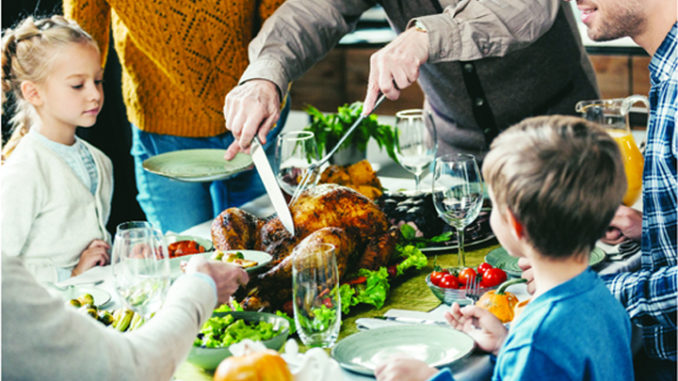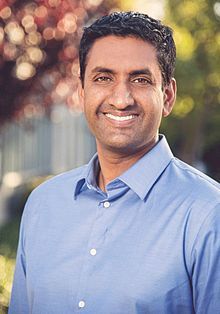
Marked as a national holiday on the fourth Thursday of November in the United States, Thanksgiving celebrates the harvest and other blessings of the past year. It is believed that Thanksgiving is modelled on a harvest feast shared by the English colonists (Pilgrims) of Plymouth and the Wampanoag people in 1621. This American holiday has many legends and rituals attached to its name. Additionally, a traditional Thanksgiving meal typically includes turkey, bread stuffing, potatoes, cranberries, and pumpkin pie. It is one of the busiest holidays as families get together and celebrate this day with a hearty meal. This year, Thanksgiving falls on Thursday, November 25, 2021.
Thanksgiving officially marks the beginning of the holiday season. It is also celebrated in Germany, Brazil, Canada, Japan and other countries. Thanksgiving falls on the second Monday of October in Canada.
Thanksgiving is celebrated to say thanks and recognise the sacrifices and blessings of the past year. The annual celebrations honour the first Thanksgiving feast shared between the colonists in Plymouth, Massachusetts, later known as the Pilgrims, and the Wampanoag Indians.
On October 3, 1863, President Abraham Lincoln had proclaimed a national day of Thanksgiving to be celebrated on Thursday, November 26.
The holiday was annually proclaimed by every President thereafter. However, after a joint resolution of Congress in 1941, President Franklin D Roosevelt issued a proclamation in 1942 designating the fourth Thursday in November (which is not always the last Thursday) as Thanksgiving Day.
Later, with more urbanisation, Thanksgiving became a day for people to get together with their friends and family to celebrate the day with a scrumptious feast. They also decorate their homes to get right into the festive spirit. The holiday moved away from its religious roots to allow immigrants of every background to participate in a common tradition.
Turkey is central to the Thanksgiving festivities in America. The bird is included in the traditional feast. Moreover, every President of the United States of America follows a ritual every Thanksgiving. They pardon the Thanksgiving turkey on the morning of the celebration.
The holiday was annually proclaimed by every President thereafter. However, after a joint resolution of Congress in 1941, President Franklin D Roosevelt issued a proclamation in 1942 designating the fourth Thursday in November (which is not always the last Thursday) as Thanksgiving Day.
Later, with more urbanisation, Thanksgiving became a day for people to get together with their friends and family to celebrate the day with a scrumptious feast. They also decorate their homes to get right into the festive spirit. The holiday moved away from its religious roots to allow immigrants of every background to participate in a common tradition.
Family Celebration
Thanksgiving Day is a day for people in the US to give thanks for what they have. Families and friends get together for a meal, which traditionally includes a roast turkey, stuffing, potatoes, vegetables, cranberry sauce, gravy, and pumpkin pie.
In some cities and towns, there are parades during the Thanksgiving weekend. In most areas, these festivities also mark the opening of the Christmas shopping season.
Long Weekend in 20 States
The Day After Thanksgiving, also know as Black Friday, is a holiday in more than 20 states. It’s common to take trips and visit family and friends during the long weekend.
Many Have the Day Off
Most government offices, businesses, schools, universities, colleges, and other organizations are closed on Thanksgiving Day. Many offices and businesses allow staff to have a long four-day weekend for Thanksgiving, so these offices and businesses are also closed on the Day after Thanksgiving Day. Public transit systems usually do not operate on their regular timetables.
Thanksgiving Day is one of the busiest periods for travel in the USA. This can cause congestion and overcrowding. Seasonal parades and busy football games can also cause disruption to local traffic.
US Holiday Since 1863
Thanksgiving Day has been an annual holiday in the United States since 1863. However, not everyone sees Thanksgiving Day as a cause for celebration.
Beginning in 1970, a group of Native Americans and their supporters have staged an annual protest for a National Day of Mourning at Plymouth Rock in Plymouth, Massachusetts on Thanksgiving Day. American Indian Heritage Day is also observed at this time of the year.
There are claims that the first Thanksgiving Day was held in the city of El Paso, Texas, in 1598. Another early event was held in 1619 in the Virginia Colony. Many people trace the origins of the modern Thanksgiving Day to the harvest celebration the Pilgrims held in Plymouth, Massachusetts in 1621. However, their first true thanksgiving was in 1623, when they gave thanks for rain that ended a drought. These early thanksgivings took the form of a special church service, rather than a feast.
In the second half of the 1600s, thanksgivings after the harvest became more common and started to become annual events. However, they were celebrated on different days in different communities and in some places there were more than one thanksgiving each year. George Washington, the first president of the United States, proclaimed the first national Thanksgiving Day in 1789.
History of Thanksgiving Day
While the tradition is mainly connected to the feast of the Pilgrims, the Puritans started the tradition before coming to the New World. The Catholic Church had instituted so many special days of remembrance, thanks, feasting, fasting, and resting that the Puritans wanted to remove all holidays and only celebrate Days of Thanksgiving or Days of Fasting. These were observed after an act of special providence, which was a disaster or threat of disaster that the Puritans believed was as a result of judgment from God. Events observed with Days of Thanksgiving include the English conquering of the Spanish Armada in 1588 and the 1606 Gunpowder Plot catastrophe.
While the American tradition is believed to have origins with the Pilgrims’ meal at Plymouth in 1621, this event was not given proper documentation and many do not wish to involve the relationship of the settlers with the Native Americans on this holiday, given the two groups’ violent history. The story goes that after the Pilgrims’ Plymouth colony had a difficult winter filled with disease, starvation, and death, the colony received assistance from Squanto and his Patuxet tribe. The Native Americans allegedly taught the pilgrims to grow their own crops and other methods of survival in the New England environment, in particular, the method of using fish to fertilize corn crops. After their first successful harvest, the Pilgrims celebrated with a feast at which Squanto and members of his tribe were in attendance.
Squanto and The Settlers
However, this story is widely debated, as similar stories originate from Spanish settlements and other groups of settlers. Due to this, the story is widely regarded as a cultural myth. In fact, it is believed that Squanto knew how to communicate with the settlers because he was previously enslaved by John Smith and taken on several voyages back to England before returning to his homeland to find the Patuxet tribe eliminated through disease, which was spread by the settlers. With no home tribe, Squanto, also called Tisquantum, settled with the English at the Plymouth colony, later serving as a guide and translator for the settlers as they visited Native American tribes. But many of these tribes distrusted Squanto for his allegiance with the settlers. The holiday’s true origins are attributed to the Puritan Feast of Thanksgiving, a tradition which many pilgrims observed in the New World.
Thanksgiving celebrations in the United States used to differ according to state. It was traditionally celebrated on the last Thursday of November in the early 1800s. Sarah Josepha Hale is a writer known for campaigning for an official date for 40 years through letters to political leaders. In 1863, President Lincoln issued a proclamation that all states will celebrate Thanksgiving on this day. This act was an effort to unite the North and the South, but due to the rebellion of the North’s authority, the holiday was not consistently celebrated on the same day until after Reconstruction. A joint resolution was signed by Congress and President Franklin D. Roosevelt in 1941 to change the holiday to the fourth Thursday of November rather than the last, believing the earlier economic boost to be beneficial to the United States economy.
Traditions of Thanksgiving Meal
There are many foods associated with the holiday of Thanksgiving, including turkey and cookies. Other common foods and drink include:
Apple Cider, Hot Chocolate, Custard, Candy Canes, Buttered Rum
Ham, Egg Nog, Fruit Cake, Plum Pudding, Mixed Nuts, Stuffing, Dumplings, Fudge, Pies
There are a few Thanksgiving traditions besides the meal. Many churches hold a special Thanksgiving Day service centered on giving thanks to God. At the meal, many families observe the ritual of going around the table to express what each member is thankful for. Some family members will travel long distances to attend this yearly reunion.
During the meal, the family may break the turkey wishbone. Whoever pulls away the larger piece is granted a wish. The President of the United States also traditionally pardons a live turkey, meaning the turkey will live on a farm without threat of being eaten.
Some will observe the holiday through charity work. Common activities include serving and preparing meals at homeless shelters and soup kitchens, organizing food and clothing drives, and participating in community outreach programs. Many cities hold large festivals or parades to honor Thanksgiving. One of the largest is New York’s Thanksgiving Day Parade, which is currently called Macy’s Thanksgiving Day Parade. The parade begins in the morning and goes down Central Park West to Macy’s Herald Square on 34th street. It started in 1924 and over two million people attend the parade annually and is second-oldest Thanksgiving parade with Detroit’s America’s Thanksgiving Parade behind the Dunkin’ Donuts Thanksgiving Day Parade in Philadelphia.
International Celebrations
Many countries all over the world celebrate a day of thanks, many of which center on a successful harvest season:
Canada’s Thanksgiving is very similar to the American celebration, marking the successful harvest of French settlers in modern-day Canada. This celebration takes place in October when the weather is warmer.
Germany celebrates the Harvest Thanksgiving Festival in October, which, like American celebrations, consists of feasting and religious traditions.
The Japanese observe Labor Thanksgiving Day, has roots with harvest celebrations but now celebrates labor, production, and thankfulness.
The Netherlands observes a Thanksgiving Day service to honor the Pilgrims that lived in Leiden before continuing on to Plymouth.





Be the first to comment